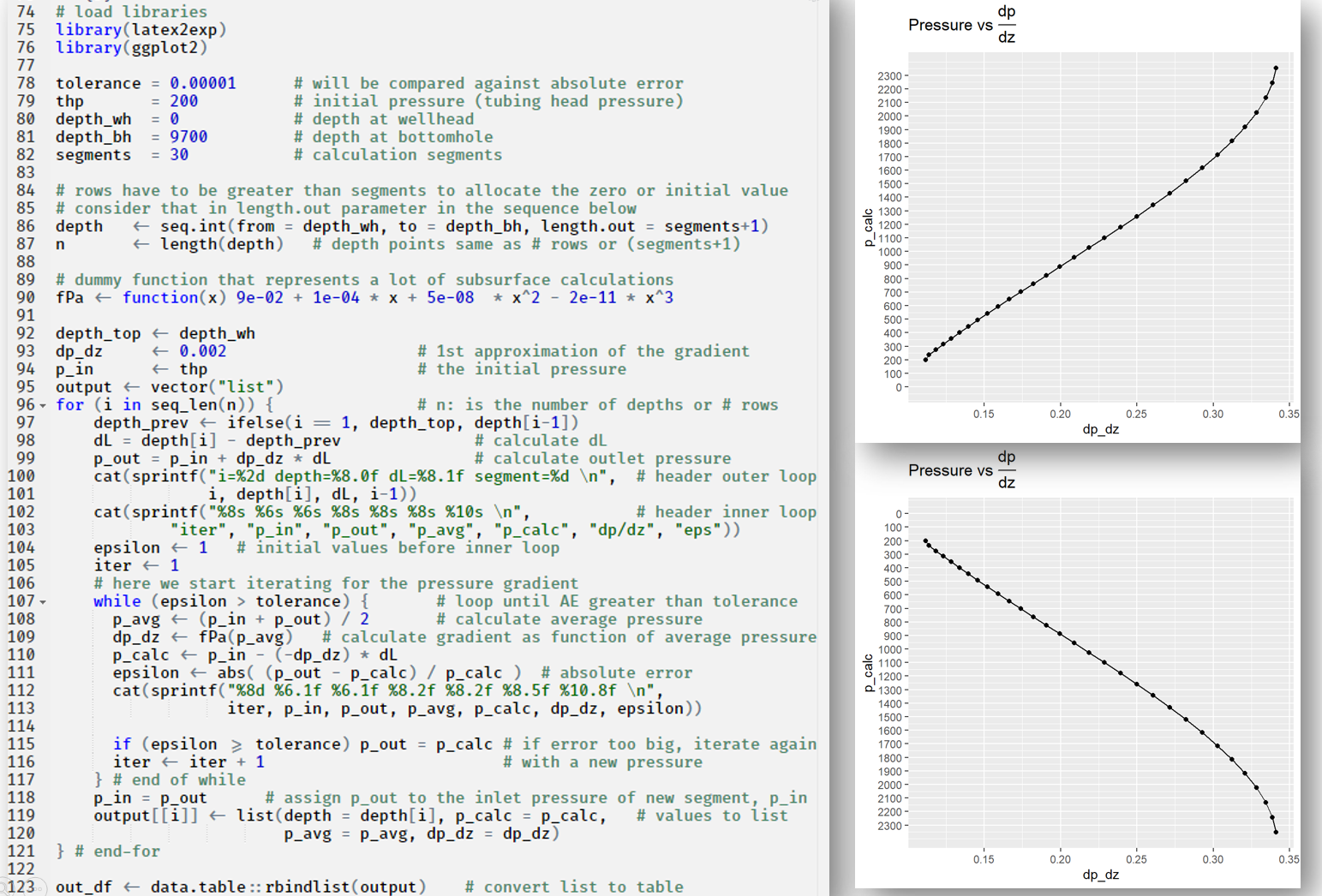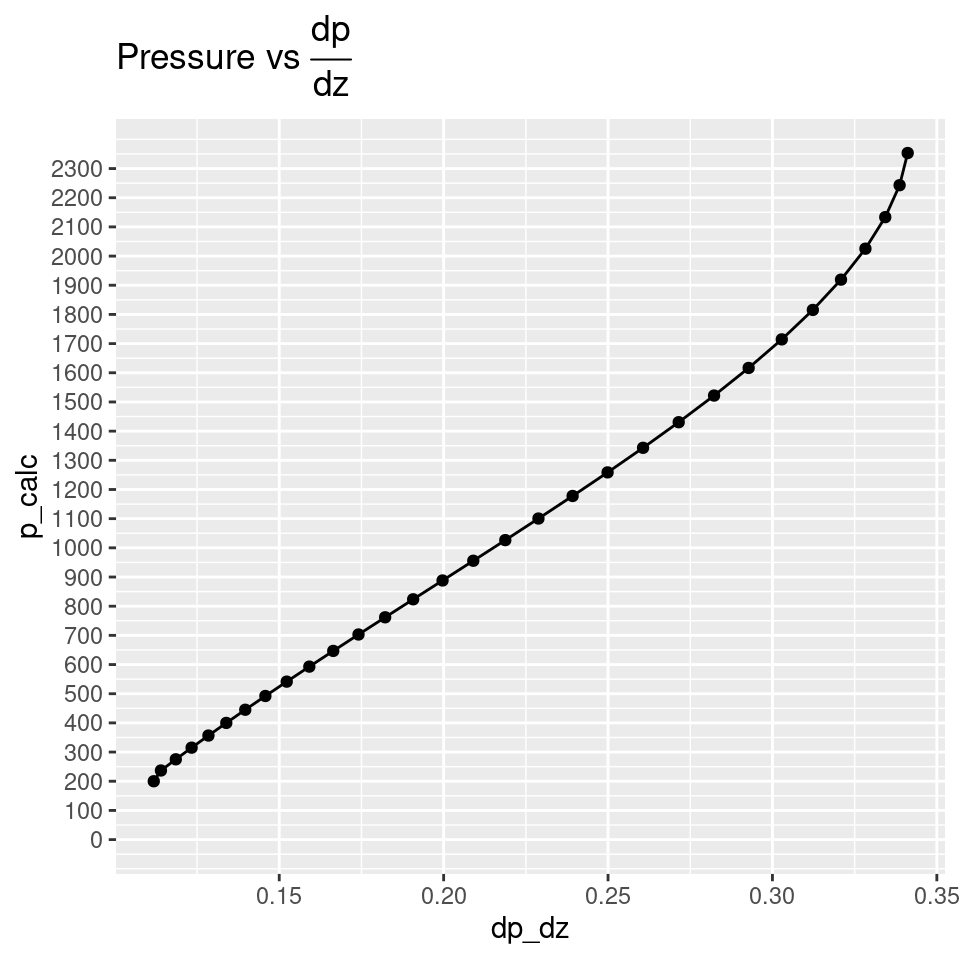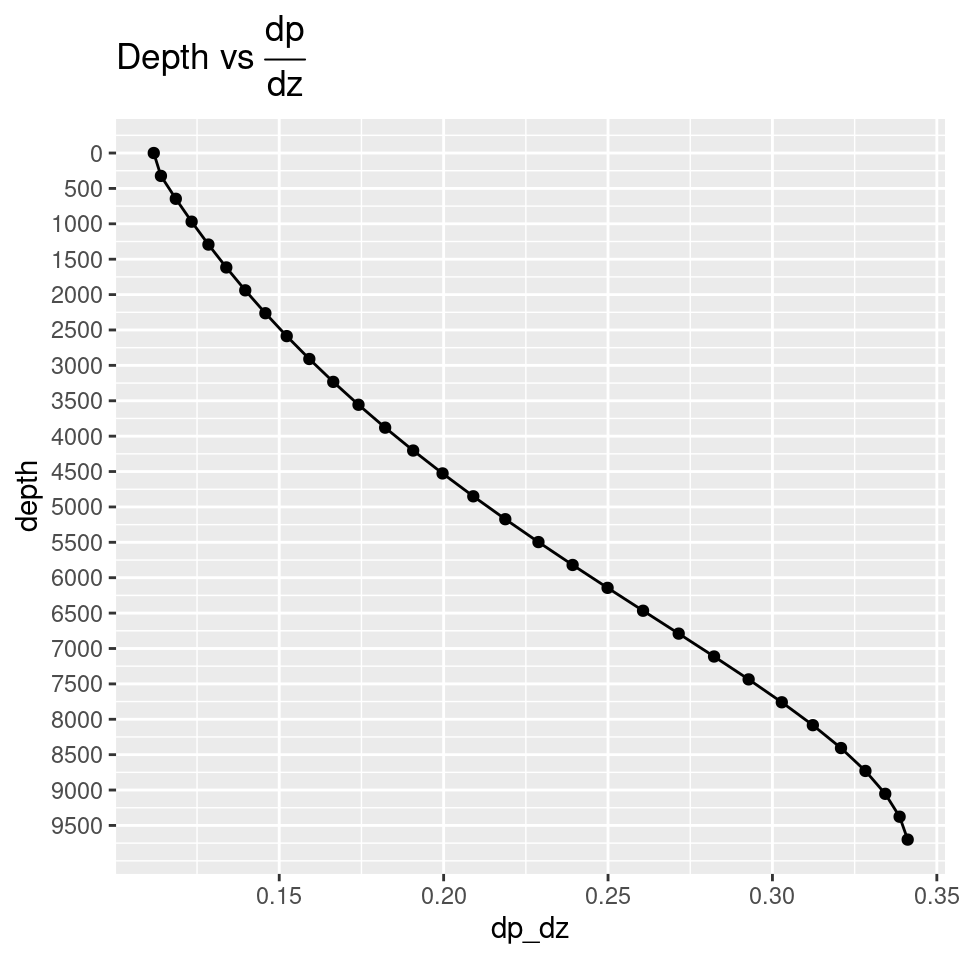
Introduction
I have always been captivated by calculations performed at depth in wells. The numerous correlations and curves that were built in the golden years of production engineering are just fascinating. Thank you Mr. Brown. Thank you Mr. Beggs. From all the various algorithms, I particularly liked one calculating the pressure losses in the tubing as the hydrocarbon fluids ascend to the surface, also called tubing performance, or vertical lift performance (VLP). If you are a petroleum engineer who just started learning to code, there is no better exercise than calculating the pressure gradient at any depth point in the wellbore. It tests your petroleum engineering skills with fluid properties of oil, gas and water; correlations; multi-phase phenomena; pressure and temperature effects; heat transfer, etc.
Although, we will not be seeing all the calculations to perform a full VLP using Hagendorn-Brown, Fancher-Brown, Duns-Ros, or Beggs-Brill correlations, this article will place you in condition to understand the whole application when it is publicly released. I will be using R as it has demonstrated a solid and reliable platform for developing rapid applications not only for statistics and data science, but also in engineering and science in general.
Motivation
For those colleagues that are looking to implement an engineering library to solve some problems arising during daily operations there is no better tool than a scripting language, be that R, or Python. There has not been a better time to switch from Excel and VBA to do quick coding than today with all the tools provided by the data science revolution. Besides revision control of your work with Git, ease of sharing within your organization, building rapid prototypes, you are also following one of the key premises of data science. Actually, what adds the word science to data science: reproducibility.
The code I am publishing here serves three purposes:
- Familiarize the petroleum engineer with a fundamental algorithm for downhole calculations
- Learn the basics of scripting with R: vectors, lists, dataframes, loops and decision logic. And plotting with one of the best tools in data visualization:
ggplot2. - Show the basic structure of more complex iterating algorithms for calculating conditions at any depth point in the well.
Computation Workflow
This is a description of what the code will be doing.
- Read the well input data
- Set the number of tubing segments
- Calculate length of tubing segments
- Set the starting calculation increment for the gradient
- Set an starting value for the inlet and outlet pressures
- Iterate through the number of tubing segments
- Calculate a depth point
- Calculate the outlet pressure at current depth
- Iterate until absolute error is within the defined tolerance
- Calculate the average pressure
- Calculate the fluid properties at P, T
- Calculate the pressure gradient
- Calculate a new outlet pressure
- Compare the absolute error vs the tolerance for the pressure
- If not converging, set inlet pressure to outlet pressure;
repeat from step
6c - Store calculations at depth
- If more tubing segment repeat from step
6
- Make data table
- Calculating the length of the tubing segments involve dividing the well depth (\(L\)) by the number of depth points (\(n\)). In this example
n=30.
\[dL = L / n\]
- For setting the starting calculation increment for the gradient we could assume 0.002 psi/ft:
\[\frac{dP}{dz} = 0.002\]
- Calculating the average pressure requires averaging the inlet and outlet pressure at the ends of the virtual pipe:
\[p_{avg} = \frac {(p_{in} + p_{out})} {2}\]
- Calculating the pressure gradient
-dP/dz: \[\left ( \frac {dp} {dL} \right ) = f(P_{avg}) \] - Calculating a new pressure
\[p_{i+1} = p_i - \left ( -\frac {dP}{dL} \right )_i dL_i \]
- Comparing the absolute error of the new pressure and the current outlet pressure. It should be less than the tolerance, otherwise, we proceed with a new iteration making \(p_{in} = p_{out}\).
\[\ | \frac { p_{out} - p_{i+1} } { p_{i+1}} | < \epsilon\]
Implementation of marching algorithm for well gradient
For demo purposes, only using a dummy function, \(fPa\) that will symbolize all the intricate calculations to find the fluid properties at the current pressure and temperature. The last thing to do is generating a dataframe with the calculated data. As a matter of fact, it could be two dataframes, one for the main results for each pipe segment; and the second dataframe -with more detail-, showing the iterations and absolute error.
Marching algorithm
I have added comments to the code as much as possible to be able to understand what every line of code is doing. There is no better way of coding than commenting code. Not only for whoever takes over your project but also keep in mind that you are documenting for your future self.
# load libraries
library(latex2exp)
library(ggplot2)
tolerance = 0.00001 # will be compared against absolute error
thp = 200 # initial pressure (tubing head pressure)
depth_wh = 0 # depth at wellhead
depth_bh = 9700 # depth at bottomhole
segments = 30 # calculation segments
# rows have to be greater than segments to allocate the zero or initial value
# consider that in length.out parameter in the sequence below
depth <- seq.int(from = depth_wh, to = depth_bh, length.out = segments+1)
n <- length(depth) # depth points same as # rows or (segments+1)
# dummy function that represents a lot of subsurface calculations
fPa <- function(x) 9e-02 + 1e-04 * x + 5e-08 * x^2 - 2e-11 * x^3
depth_top <- depth_wh
dp_dz <- 0.002 # 1st approximation of the gradient
p_in <- thp # the initial pressure
output <- vector("list")
for (i in seq_len(n)) { # n: is the number of depths or # rows
depth_prev <- ifelse(i == 1, depth_top, depth[i-1])
dL = depth[i] - depth_prev # calculate dL
p_out = p_in + dp_dz * dL # calculate outlet pressure
cat(sprintf("i=%2d depth=%8.0f dL=%8.1f segment=%d \n", # header outer loop
i, depth[i], dL, i-1))
cat(sprintf("%8s %6s %6s %8s %8s %8s %10s \n", # header inner loop
"iter", "p_in", "p_out", "p_avg", "p_calc", "dp/dz", "eps"))
epsilon <- 1 # initial values before inner loop
iter <- 1
# here we start iterating for the pressure gradient
while (epsilon > tolerance) { # loop until AE greater than tolerance
p_avg <- (p_in + p_out) / 2 # calculate average pressure
dp_dz <- fPa(p_avg) # calculate gradient as function of average pressure
p_calc <- p_in - (-dp_dz) * dL
epsilon <- abs( (p_out - p_calc) / p_calc ) # absolute error
cat(sprintf("%8d %6.1f %6.1f %8.2f %8.2f %8.5f %10.8f \n",
iter, p_in, p_out, p_avg, p_calc, dp_dz, epsilon))
if (epsilon >= tolerance) p_out = p_calc # if error too big, iterate again
iter <- iter + 1 # with a new pressure
} # end of while
p_in = p_out # assign p_out to the inlet pressure of new segment, p_in
output[[i]] <- list(depth = depth[i], p_calc = p_calc, # values to list
p_avg = p_avg, dp_dz = dp_dz)
} # end-for
#> i= 1 depth= 0 dL= 0.0 segment=0
#> iter p_in p_out p_avg p_calc dp/dz eps
#> 1 200.0 200.0 200.00 200.00 0.11184 0.00000000
#> i= 2 depth= 323 dL= 323.3 segment=1
#> iter p_in p_out p_avg p_calc dp/dz eps
#> 1 200.0 236.2 218.08 236.85 0.11398 0.00291946
#> 2 200.0 236.9 218.43 236.87 0.11402 0.00005615
#> 3 200.0 236.9 218.43 236.87 0.11402 0.00000108
#> i= 3 depth= 647 dL= 323.3 segment=2
#> iter p_in p_out p_avg p_calc dp/dz eps
#> 1 236.9 273.7 255.30 275.17 0.11846 0.00521195
#> 2 236.9 275.2 256.02 275.20 0.11854 0.00010249
#> 3 236.9 275.2 256.03 275.20 0.11855 0.00000202
#> i= 4 depth= 970 dL= 323.3 segment=3
#> iter p_in p_out p_avg p_calc dp/dz eps
#> 1 275.2 313.5 294.36 315.05 0.12326 0.00483722
#> 2 275.2 315.0 295.12 315.08 0.12335 0.00009717
#> 3 275.2 315.1 295.14 315.08 0.12335 0.00000195
#> i= 5 depth= 1293 dL= 323.3 segment=4
#> iter p_in p_out p_avg p_calc dp/dz eps
#> 1 315.1 355.0 335.02 356.58 0.12836 0.00454033
#> 2 315.1 356.6 335.83 356.62 0.12846 0.00009306
#> 3 315.1 356.6 335.85 356.62 0.12847 0.00000191
#> i= 6 depth= 1617 dL= 323.3 segment=5
#> iter p_in p_out p_avg p_calc dp/dz eps
#> 1 356.6 398.2 377.39 399.87 0.13378 0.00429984
#> 2 356.6 399.9 378.24 399.91 0.13390 0.00008982
#> 3 356.6 399.9 378.26 399.91 0.13390 0.00000188
#> i= 7 depth= 1940 dL= 323.3 segment=6
#> iter p_in p_out p_avg p_calc dp/dz eps
#> 1 399.9 443.2 421.56 445.03 0.13954 0.00410123
#> 2 399.9 445.0 422.47 445.07 0.13966 0.00008719
#> 3 399.9 445.1 422.49 445.07 0.13967 0.00000185
#> i= 8 depth= 2263 dL= 323.3 segment=7
#> iter p_in p_out p_avg p_calc dp/dz eps
#> 1 445.1 490.2 467.65 492.16 0.14565 0.00393422
#> 2 445.1 492.2 468.61 492.20 0.14578 0.00008501
#> 3 445.1 492.2 468.64 492.20 0.14579 0.00000184
#> i= 9 depth= 2587 dL= 323.3 segment=8
#> iter p_in p_out p_avg p_calc dp/dz eps
#> 1 492.2 539.3 515.77 541.39 0.15213 0.00379124
#> 2 492.2 541.4 516.80 541.44 0.15227 0.00008313
#> 3 492.2 541.4 516.82 541.44 0.15228 0.00000182
#> i=10 depth= 2910 dL= 323.3 segment=9
#> iter p_in p_out p_avg p_calc dp/dz eps
#> 1 541.4 590.7 566.06 592.85 0.15900 0.00366651
#> 2 541.4 592.8 567.14 592.90 0.15915 0.00008144
#> 3 541.4 592.9 567.17 592.90 0.15915 0.00000181
#> i=11 depth= 3233 dL= 323.3 segment=10
#> iter p_in p_out p_avg p_calc dp/dz eps
#> 1 592.9 644.4 618.63 646.65 0.16626 0.00355546
#> 2 592.9 646.7 619.78 646.71 0.16642 0.00007984
#> 3 592.9 646.7 619.80 646.71 0.16643 0.00000179
#> i=12 depth= 3557 dL= 323.3 segment=11
#> iter p_in p_out p_avg p_calc dp/dz eps
#> 1 646.7 700.5 673.61 702.95 0.17394 0.00345433
#> 2 646.7 702.9 674.83 703.00 0.17411 0.00007826
#> 3 646.7 703.0 674.85 703.00 0.17411 0.00000177
#> i=13 depth= 3880 dL= 323.3 segment=12
#> iter p_in p_out p_avg p_calc dp/dz eps
#> 1 703.0 759.3 731.15 761.86 0.18203 0.00335992
#> 2 703.0 761.9 732.43 761.91 0.18221 0.00007661
#> 3 703.0 761.9 732.46 761.92 0.18221 0.00000175
#> i=14 depth= 4203 dL= 323.3 segment=13
#> iter p_in p_out p_avg p_calc dp/dz eps
#> 1 761.9 820.8 791.37 823.52 0.19054 0.00326942
#> 2 761.9 823.5 792.72 823.58 0.19073 0.00007482
#> 3 761.9 823.6 792.75 823.58 0.19073 0.00000171
#> i=15 depth= 4527 dL= 323.3 segment=14
#> iter p_in p_out p_avg p_calc dp/dz eps
#> 1 823.6 885.3 854.42 888.08 0.19947 0.00318027
#> 2 823.6 888.1 855.83 888.14 0.19967 0.00007282
#> 3 823.6 888.1 855.86 888.14 0.19967 0.00000167
#> i=16 depth= 4850 dL= 323.3 segment=15
#> iter p_in p_out p_avg p_calc dp/dz eps
#> 1 888.1 952.7 920.42 955.66 0.20881 0.00309004
#> 2 888.1 955.7 921.90 955.72 0.20901 0.00007053
#> 3 888.1 955.7 921.93 955.73 0.20902 0.00000161
#> i=17 depth= 5173 dL= 323.3 segment=16
#> iter p_in p_out p_avg p_calc dp/dz eps
#> 1 955.7 1023.3 989.52 1026.38 0.21853 0.00299644
#> 2 955.7 1026.4 991.05 1026.45 0.21875 0.00006791
#> 3 955.7 1026.5 991.09 1026.45 0.21875 0.00000154
#> i=18 depth= 5497 dL= 323.3 segment=17
#> iter p_in p_out p_avg p_calc dp/dz eps
#> 1 1026.5 1097.2 1061.82 1100.37 0.22861 0.00289723
#> 2 1026.5 1100.4 1063.41 1100.44 0.22883 0.00006487
#> 3 1026.5 1100.4 1063.45 1100.44 0.22884 0.00000145
#> i=19 depth= 5820 dL= 323.3 segment=18
#> iter p_in p_out p_avg p_calc dp/dz eps
#> 1 1100.4 1174.4 1137.44 1177.72 0.23900 0.00279021
#> 2 1100.4 1177.7 1139.08 1177.79 0.23922 0.00006138
#> 3 1100.4 1177.8 1139.12 1177.79 0.23923 0.00000135
#> i=20 depth= 6143 dL= 323.3 segment=19
#> iter p_in p_out p_avg p_calc dp/dz eps
#> 1 1177.8 1255.1 1216.47 1258.51 0.24963 0.00267322
#> 2 1177.8 1258.5 1218.15 1258.58 0.24986 0.00005740
#> 3 1177.8 1258.6 1218.18 1258.58 0.24986 0.00000123
#> i=21 depth= 6467 dL= 323.3 segment=20
#> iter p_in p_out p_avg p_calc dp/dz eps
#> 1 1258.6 1339.4 1298.97 1342.78 0.26043 0.00254417
#> 2 1258.6 1342.8 1300.68 1342.85 0.26065 0.00005290
#> 3 1258.6 1342.9 1300.72 1342.86 0.26065 0.00000110
#> i=22 depth= 6790 dL= 323.3 segment=21
#> iter p_in p_out p_avg p_calc dp/dz eps
#> 1 1342.9 1427.1 1384.99 1430.57 0.27128 0.00240109
#> 2 1342.9 1430.6 1386.71 1430.63 0.27149 0.00004788
#> 3 1342.9 1430.6 1386.74 1430.64 0.27149 0.00000095
#> i=23 depth= 7113 dL= 323.3 segment=22
#> iter p_in p_out p_avg p_calc dp/dz eps
#> 1 1430.6 1518.4 1474.53 1521.83 0.28204 0.00224219
#> 2 1430.6 1521.8 1476.23 1521.89 0.28224 0.00004238
#> 3 1430.6 1521.9 1476.26 1521.89 0.28225 0.00000080
#> i=24 depth= 7437 dL= 323.3 segment=23
#> iter p_in p_out p_avg p_calc dp/dz eps
#> 1 1521.9 1613.2 1567.52 1616.49 0.29258 0.00206594
#> 2 1521.9 1616.5 1569.19 1616.55 0.29276 0.00003649
#> 3 1521.9 1616.6 1569.22 1616.55 0.29276 0.00000064
#> i=25 depth= 7760 dL= 323.3 segment=24
#> iter p_in p_out p_avg p_calc dp/dz eps
#> 1 1616.6 1711.2 1663.88 1714.42 0.30268 0.00187121
#> 2 1616.6 1714.4 1665.49 1714.47 0.30284 0.00003031
#> 3 1616.6 1714.5 1665.51 1714.47 0.30285 0.00000049
#> i=26 depth= 8083 dL= 323.3 segment=25
#> iter p_in p_out p_avg p_calc dp/dz eps
#> 1 1714.5 1812.4 1763.43 1815.40 0.31215 0.00165741
#> 2 1714.5 1815.4 1764.94 1815.45 0.31229 0.00002403
#> 3 1714.5 1815.4 1764.96 1815.45 0.31229 0.00000035
#> i=27 depth= 8407 dL= 323.3 segment=26
#> iter p_in p_out p_avg p_calc dp/dz eps
#> 1 1815.4 1916.4 1865.93 1919.15 0.32075 0.00142461
#> 2 1815.4 1919.2 1867.30 1919.19 0.32085 0.00001787
#> 3 1815.4 1919.2 1867.32 1919.19 0.32085 0.00000022
#> i=28 depth= 8730 dL= 323.3 segment=27
#> iter p_in p_out p_avg p_calc dp/dz eps
#> 1 1919.2 2022.9 1971.06 2025.31 0.32821 0.00117372
#> 2 1919.2 2025.3 1972.25 2025.33 0.32828 0.00001213
#> 3 1919.2 2025.3 1972.26 2025.33 0.32828 0.00000013
#> i=29 depth= 9053 dL= 323.3 segment=28
#> iter p_in p_out p_avg p_calc dp/dz eps
#> 1 2025.3 2131.5 2078.40 2133.41 0.33426 0.00090664
#> 2 2025.3 2133.4 2079.37 2133.43 0.33431 0.00000712
#> i=30 depth= 9377 dL= 323.3 segment=29
#> iter p_in p_out p_avg p_calc dp/dz eps
#> 1 2133.4 2241.5 2187.46 2242.91 0.33866 0.00062631
#> 2 2133.4 2242.9 2188.16 2242.92 0.33868 0.00000320
#> i=31 depth= 9700 dL= 323.3 segment=30
#> iter p_in p_out p_avg p_calc dp/dz eps
#> 1 2242.9 2352.4 2297.66 2353.21 0.34113 0.00033691
#> 2 2242.9 2353.2 2298.06 2353.21 0.34114 0.00000071
out_df <- data.table::rbindlist(output) # convert list to tablePlots
The plots have been created using ggplot2, a very flexible, customizable and powerful visualization platform. I have made use of couple of advanced characteristics of ggplot: reverse the y-axis, and annotate the plot with Latex with the package latextoexp. Also, I am changing the default number of ticks on the y-axis using breaks, as well as sequences to mark the location of the ticks.
# plot pressure vs gradient
ggplot(out_df, aes(x=dp_dz, y=p_calc)) +
scale_y_continuous(limits = c(0, max(out_df$p_calc)),
breaks = seq(0, max(out_df$p_calc), 100)) +
geom_line() +
geom_point() +
labs(title = TeX("Pressure vs $\\frac{dp}{dz}$"))
# reverse the y-axis
ggplot(out_df, aes(x=dp_dz, y=depth)) +
scale_y_reverse(limits = c(max(out_df$depth), 0),
breaks = seq(0, max(out_df$depth), 500)) +
geom_line() +
geom_point() + labs(title = TeX("Depth vs $\\frac{dp}{dz}$"))
Results table
There are 1001 ways of getting the same result in R. Here I am using one that is fast with help from the package data.table. It converts the vector-list output to a data table; pretty similar or equivalent to a dataframe.
# dataframe from row-vector
out_df
#> depth p_calc p_avg dp_dz
#> 1: 0.0000 200.0000 200.0000 0.1118400
#> 2: 323.3333 236.8666 218.4332 0.1140205
#> 3: 646.6667 275.1959 256.0309 0.1185450
#> 4: 970.0000 315.0801 295.1374 0.1233549
#> 5: 1293.3333 356.6171 335.8480 0.1284669
#> 6: 1616.6667 399.9101 378.2629 0.1338980
#> 7: 1940.0000 445.0679 422.4882 0.1396654
#> 8: 2263.3333 492.2045 468.6353 0.1457861
#> 9: 2586.6667 541.4397 516.8211 0.1522764
#> 10: 2910.0000 592.8978 567.1677 0.1591518
#> 11: 3233.3333 646.7077 619.8016 0.1664259
#> 12: 3556.6667 703.0021 674.8537 0.1741098
#> 13: 3880.0000 761.9158 732.4576 0.1822113
#> 14: 4203.3333 823.5849 792.7490 0.1907334
#> 15: 4526.6667 888.1444 855.8632 0.1996730
#> 16: 4850.0000 955.7259 921.9336 0.2090193
#> 17: 5173.3333 1026.4540 991.0884 0.2187516
#> 18: 5496.6667 1100.4431 1063.4470 0.2288372
#> 19: 5820.0000 1177.7922 1139.1161 0.2392289
#> 20: 6143.3333 1258.5793 1218.1842 0.2498620
#> 21: 6466.6667 1342.8553 1300.7158 0.2606520
#> 22: 6790.0000 1430.6361 1386.7442 0.2714916
#> 23: 7113.3333 1521.8949 1476.2642 0.2822481
#> 24: 7436.6667 1616.5535 1569.2231 0.2927623
#> 25: 7760.0000 1714.4732 1665.5124 0.3028475
#> 26: 8083.3333 1815.4461 1764.9589 0.3122901
#> 27: 8406.6667 1919.1881 1867.3166 0.3208534
#> 28: 8730.0000 2025.3322 1972.2598 0.3282821
#> 29: 9053.3333 2133.4260 2079.3714 0.3343113
#> 30: 9376.6667 2242.9167 2188.1601 0.3386781
#> 31: 9700.0000 2353.2099 2298.0589 0.3411352
#> depth p_calc p_avg dp_dzThere it is. An algorithm to iterate through the production tubing to calculate fluid conditions at different depth points.
What’s Next
Integrate this marching algorithm with real calculations of fluid properties at pressure and temperature at depth. Formation volume factors, viscosities, holdup, surface velocity, compressibility factor, etc. I will be using a package I wrote in R for the calculation of compressibility factor for gases, zFactor.
Add heat transfer effects to the fluid temperature as it moves up to the surface.
Add calculations for inclined wells.
References
- 2006, Ovadia Shoham. Mechanistic Modeling of Gas Liquid Two-Phase flow in pipes.
- 1977, Kermit E. Brown and H. Dale Beggs. The Technology of Artificial Lift Methods